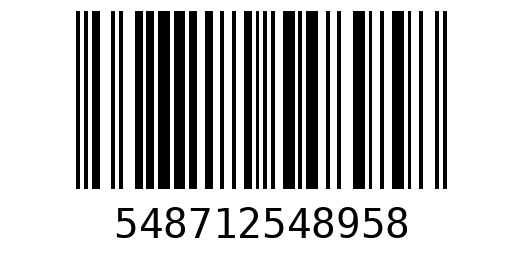Intro

What is a barcode?
A barcode is a machine-readable representation of data in a visual format. It consists of a series
of parallel lines or geometric patterns arranged in a specific way, with each pattern representing a
different alphanumeric character or set of characters. Barcodes are widely used in various
industries for purposes such as inventory tracking, product identification, and asset management.
They are used for a wide range of applications accross various industries. Here are three examples.
Easy checkout: When you're ready to buy something, the cashier just scans the
barcode with a machine. That machine reads the barcode's secret code, which tells it things like
what the item is and how much it costs. This makes checking out super fast and helps stores keep
track of what they're selling.
Tracking Shipments: Ever wonder how your package magically finds its way to your
doorstep after you order it online? Well, barcodes are part of the magic! When your package is sent
out, it gets a special barcode label. As it travels from the warehouse to the delivery truck to your
house, scanners read the barcode and keep tabs on where it's going. So, barcodes help companies make
sure your package gets to you safe and sound.
Inventory Management: Think about how many books a big bookstore or library has –
tons, right? Barcodes help keep track of all those books! Every time a new batch of books arrives at
the bookstore or library, they're scanned with a barcode scanner. That way, the store or library
knows exactly which books they have and where they are. It helps them keep their shelves organized
and make sure they always have the books people want.
Different Types
There are many types of barcodes, each designed for specific applications and requirements. The
reason for the variety of barcode types lies in the diverse requirements of different industries,
applications, geographic location and different encoding schemes.
Some barcodes are optimized for high-speed scanning in retail environments, while
others are designed to encode large amounts of data in limited space. Additionally, certain barcode
types offer enhanced error detection and correction capabilities, making them suitable for
applications where data integrity is critical.
Overall, the wide range of barcode types allows businesses and organizations to choose the most
suitable barcode format for their specific needs, ensuring efficient and accurate data capture in
various contexts.
Legacy and international efforts
Different regions and industries often have specific requirements or preferences for the types of
barcodes they use. This can be influenced by a few different factors:
Legacy Systems: Some industries may already have established systems in place for
handling certain types of barcodes. These systems might have been developed years ago and are still
in use today because they work well and are familiar to the industry.
Regulatory Standards: Certain industries or regions might have regulations or
standards that dictate which types of barcodes they need to use. These standards ensure consistency
and accuracy in data collection and processing.
Regional Conventions: ometimes, certain types of barcodes are just more popularfor
commonly used in specific geographic regions. This could be due to historical reasons, industry
preferences, or simply because it's what everyone in that area is used to. For example, in the
United States, UPC barcodes are commonly used in retail environments, while EAN
barcodes are more common in Europe. These differences can be traced back to historical adoption
patterns and industry preferences.
There are indeed international efforts to standardize barcodes across different regions, languages,
and systems. This initiative has several key drivers, with globalization being a major
one.
It's worth noting that while there are standardized barcode systems like UPC/EAN and GS1, different
regions and industries may have specific variations or additional data encoded within the standard
format to cater to their specific needs.
PS.
If you consider an information here to be wrong, please, I kindly ask you to contact me so I can
make the necessary changes. Thank you.
Barbara Calderon.
About the Project

Greetings, and welcome to the 12 Barcodes API project.
I'm Barbara Calderon, a software developer from Brazil who
recently graduated with a Bachelor's Degree in Information Systems. This project represents
another step in my journey to enhance my skills and understanding of web development.
Crafted with a focus on (honestly) educating myself a bit more, this RESTful API serves as a
playground
to explore and master technologies from the Flask ecosystem and some software design. Embracing the
Model-View-Controller (MVC) architecture and DRY principle, I
strive for a clean, organized codebase that fosters maintainability and scalability
- in the rare chance this project ever grows to something unexpected.
Here, you'll find only two HTTP methods: POST and GET.
With POST, you can send data to encode and receive the corresponding barcode image for the specified
endpoint. Meanwhile, GET returns a JSON response containing information about the barcode associated
with your requested endpoint. The key here is simplicity and practicality. More on
this in the Swagger tab in the main page.
To ensure clarity and ease of use, I've meticulously documented this project according to the
OpenAPI standard with Swagger. Drawing inspiration from HTML5UP
templates, I've added my personal touch to the landing page design, making tweaks for a customized
look and feel. Check them out, they're great. Additionally, the project features stunning imagery
sourced from Unsplash, adding visual appeal and personality.
One unique aspect of this project is its reliance on lightweight data processing,
foregoing the need for a traditional database. To achieve this, I crafted a buffer to handle images
so it deals with image data directly in memory, avoiding the need to write it down. This may impact
latency since the images are served without the need for a retrieval move. No need for a persistent
storage.
This decision reflects my commitment to simplicity. You need a barcode image, you get
it. You need a little bit of information for that type of barcode, you get
it.
I've chosen to deploy this project on the Render platform, one, because they have a
free service and two, their reliability for users like you. With Render's robust infrastructure and
seamless deployment process, I can focus on delivering a polished and reliable API experience.
Because it is deployed on a free server, it may take a while to start the engines the first time.
Please, keep this in mind when you visit this URL.
Lastly, this project is hosted in a Github repository. If code is something that
interests you, go check it out.
Now it's time to plug the machines.
Thank you for dropping by.
Barbara Calderon.
Swagger

Swagger-UI
Check the documentation at "/swagger-ui", a user-friendly
interface generated by Swagger/OpenAPI tools that allows developers and users to interact with and
explore an API directly from the web browser.
If you are a developer, you can automate requests to get the data you want. If you
are a browser user, you can manually retrieve the data you want through mouse
clicks and save it in your machine. A step-by-step guide is below.
Endpoints and methods
The 12 BARCODES API has the following endpoints:
- /code-128
- /code-39
- /ean-8
- /ean-13
- /ean-14
- /pzn7
- /jan
- /issn
- /isbn-10
- /isbn-13
- /upc-a
- /gs1-128
For each endpoint, there are two HTTP methods available to make a request: they are
POST and
GET.
The first one will send you the barcode image as response:

The second one will send you a json with some information about the barcode:

Browser User
If you are browsing this API from the browser (Chrome, Firefox, Safari, Opera, etc), you can generate
the barcode images and download them in your machine. It's simple:
- Go to the "/swagger-ui" mentioned in the first paragraph
- Choose the barcode of your preference
- Click the green button for POST method
- Click the TRY IT OUT button
- It will open an input space that contains a JSON (brackets { })
- In the JSON, type the data you want to encode instead of the name "string"
- (Make sure the data is valid for that type of barcode or else it will generate an error)
- Click the EXECUTE button
- The image is generated and ready for download in a blue link below
- Download the image
- Done
Educational Purposes
This API relies on free resources as it was made for small-scale requests to a synchronous
server. This is because it was intended to serve as a personal educational project to improve
coding skills. I crafted the idea and built it on my own. So I kindly ask you to be patient
about it if you encounter something odd.
I harvested valuable knowledge from coding this and doing research. I learned a lot
and choose to keep it open and public for anyone interested in checking out the code and the
overall system. Hope it helps.
Best regards,
Barbara Calderon.
Contact





